Democrats love to avoid it, and Republicans love to lie about it. But later-abortion care has never been more important.
SOURCE: The Nation, by Amy Littlefield, 13 May 2025
June 2025 Issue
Ayana, 28 years old and 28 weeks pregnant, eases herself onto the procedure table at Partners in Abortion Care in College Park, Maryland. She is a Black woman with the tiny bearing and erect posture of a bird. Above her head, a flock of pink and blue butterflies decorates the ceiling. In a few minutes, a doctor will perform an injection to the fetal heart to end her pregnancy.
Ayana had spent months in turmoil over this abortion. As she chased after her two older kids while lugging her 1-year-old on family outings to the arcade and the movies, she tried to imagine hauling two car seats instead of one. While she changed her baby’s diapers, she thought about what a newborn would subtract from him. The family was already stretched thin. Her boyfriend worked for a moving company. Ayana cared for her baby in the mornings, then handed him off to her sister to go to work. She juggled two jobs, teaching kids with autism during the week and answering the phones at a pizza place on weekends. Her oldest son was oblivious to her pregnancy as he raced around playing basketball and video games. But her daughter seemed to sense that her mother was struggling. At 5, she was already trying to cook and change her baby brother’s diapers. When she noticed her mother’s belly growing, she chided her, “We don’t need any more babies.”
Ayana, who had grown up as the oldest of three, knew the pressure another baby would put on her kids. She waited months for a sign; in the end, the sign was her three kids. And now that she’s made her choice, she radiates a sense of unflappable calm. “I just had to realize that I wasn’t ready,” she told me.
The care she is about to receive has been maligned and lied about from the national political stage. Later abortion is banned in all but nine states and Washington, DC, and performed in only a handful of clinics nationwide. It has divided the pro-choice movement, leading to bitter struggles and the resignations of high-profile leaders. Most of the widely celebrated abortion-rights ballot initiatives floated in a record number of states since 2022, when the Supreme Court overturned the national right to abortion in Dobbs v. Jackson Women’s Health Organization, have allowed states to ban it.
Democrats love to avoid it, and Republicans love to lie about it. Even among pro-choice voters, abortions that take place when the fetus looks less like a blob of tissue and more like a baby stir the kind of complex feelings that our political discourse seldom accommodates. As a result, later abortion has never had the widespread support that earlier abortion receives. And under the Trump administration, this care could get harder to provide and receive. Health and Human Services Secretary Robert F. Kennedy Jr. noted during his confirmation hearing in January that the administration wanted to end later abortions, signaling the possibility that Trump might pressure Congress to pass a ban on them or even attempt to do so himself through an executive order. More likely, the administration could restrict medication abortion, disrupting access to earlier abortions and driving up the need for later procedures.
Since Dobbs, abortion bans have already pushed some patients further into pregnancy. And even as clinics in many states have closed, there has been a rise in the number of places advertising later care. After third-trimester-abortion provider George Tiller’s assassination in a Kansas church in 2009, just four providers continued the work he once did, according to the 2013 documentary After Tiller. Today, a new generation of abortion providers has stepped into the breach. In the fall of 2022, the doctor-midwife duo Diane Horvath and Morgan Nuzzo opened Partners in Abortion Care. It’s one of the few clinics in the country that offers abortions to anyone up to 34 weeks; other clinics offer care that late at the discretion of the physician. Horvath estimates there are now at least 15 doctors at a handful of clinics in the United States offering third-trimester abortions, and more who are doing so in hospitals.
For Horvath and like-minded advocates, defending this procedure is a bright line for a movement that has lost Roe and must now build a new, more ambitious framework. Their clarity in fighting for the procedure stems from research showing that later-abortion patients are among the most vulnerable people in the country—disproportionately young, low-income, and people of color.
“These are often children; these are people in poverty; these are people with very few resources; these are people who use drugs,” Horvath told me. “If we’re willing to throw the most vulnerable people under the bus as a movement, then what the hell is our movement doing?”
In early March, I spent three days with Horvath and her team at Partners, setting out to demystify this much-maligned procedure. I emerged with a greater sympathy for the argument Horvath and activists like her have been shouting for years: that we are destined to repeat the mistakes that led to Roe’s fall if we cannot find a way to defend these most demonized of abortions.
[Editor’s Note: This excellent and important article is very, very long, and I think it demands to be read and understood by everyone who considers themselves to be a supporter of abortion rights.]



